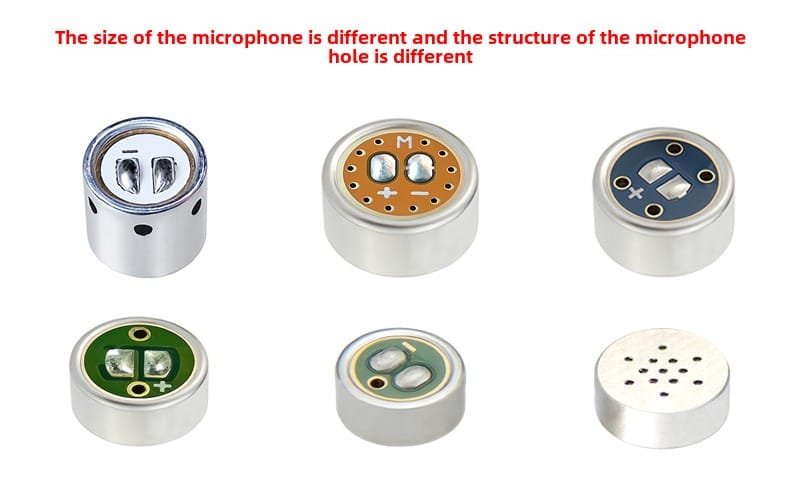
What is the function of the microphone hole in the polar body?
The microphone hole of an electret condenser microphone is one of the key designs in its structure, mainly used for sound wave introduction, frequency response adjustment, directional control, air pressure balance, physical protection, and dust prevention.
- Sound wave import
Core function: The microphone hole is the channel through which sound waves enter the microphone. External sound waves are transmitted through holes to the internal diaphragm, causing the diaphragm to vibrate and convert sound energy into electrical signals.
Acoustic path optimization: The size, shape, and arrangement of holes can affect the propagation path of sound waves, ensuring efficient application of sound waves to the diaphragm and reducing energy loss.
- Frequency response adjustment
Acoustic filtering: The design of holes (such as aperture, depth) can form specific acoustic impedance, attenuate or enhance high-frequency or low-frequency components, thereby adjusting the frequency response characteristics of the microphone.
Suppressing high-frequency noise: Small aperture or porous structures can increase the damping of high-frequency sound waves and reduce harsh noise.
- Directional control
Porous acoustic interference: The layout of multiple microphone holes can form a phase difference of sound waves, and achieve specific directionality (such as omnidirectional, heart-shaped direction) through interference effects, enhancing the sound capture ability in the target direction.
Anti wind noise design: The specific arrangement of hole structures can disperse airflow impact and reduce wind noise interference.
- Air pressure balance
Balancing internal and external pressures: Holes allow for synchronous changes in external air pressure and internal cavities, avoiding pressure differences caused by temperature or altitude changes that can deform the diaphragm and affect sensitivity.
Explosion proof sound protection: In case of sudden high sound pressure (such as close range burst sound), the air pressure can be quickly released through the hole to prevent damage to the diaphragm due to overload.
- Physical protection and dust prevention
Barrier function: The holes are usually covered with dust-proof nets or hydrophobic membranes to prevent dust and water droplets from entering the interior, protecting the diaphragm and polarizer layer.
Mechanical protection: The pore structure disperses external physical impacts, reducing the risk of direct collision damage to the diaphragm.
summarize
The microphone head hole is one of the core structures for achieving acoustic electric conversion in an electret microphone, and its design directly affects the quality, durability, and environmental adaptability of sound collection.
Engineers need to balance acoustic performance, protection capability, and directionality to optimize hole parameters to meet different application requirements (such as mobile phone microphones, conference equipment, professional recording, etc.).

